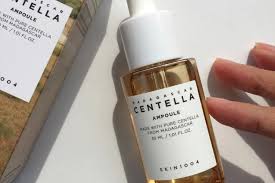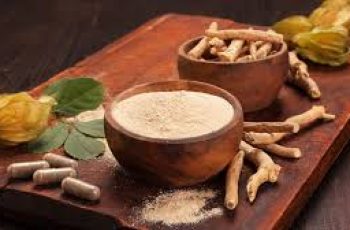
The Complete Science Behind Centella Asiatica in Skin Care
If you’ve spent any time browsing skincare aisles or scrolling through beauty blogs, you’ve likely come across the name Centella Asiatica.
Sometimes called gotu kola, this humble herb has become one of the most beloved ingredients in modern skincare—and for good reason.
With a long history in traditional medicine and a growing list of clinically studied benefits, Centella Asiatica is more than just a trend.
It’s a powerhouse botanical that addresses multiple skin concerns, from inflammation to aging, and it works for a wide range of skin types.
In this in-depth guide, we’re unpacking everything you need to know about Centella Asiatica.
You’ll learn where it comes from, why it works so well, what kinds of products feature it, who it’s best for, and what to be cautious about.
Whether you’re dealing with sensitive, acne-prone, aging, or dehydrated skin, there’s a good chance Centella Asiatica could become your new skincare essential.
What is Centella Asiatica?
Centella Asiatica is a perennial herb native to the wetlands of Asia and parts of Africa.
It’s especially prevalent in countries like India, Sri Lanka, China, Indonesia, and South Africa, where it has long been revered for its healing properties in Ayurveda, Traditional Chinese Medicine, and African traditional healing.
In traditional systems, it was used to treat wounds, burns, ulcers, and even leprosy, but its healing power doesn’t stop there.
Modern scientific research has confirmed many of its therapeutic claims, especially in dermatology.
Also known as “tiger grass” (because wounded tigers were observed rolling in it to heal), Centella Asiatica has found a prominent place in K-beauty (Korean skincare), and is now widely used in formulations around the world.
Key Active Compounds in Centella Asiatica
What gives this plant its skin-boosting magic? The answer lies in its rich mix of bioactive compounds, which have been studied for their anti-inflammatory, antioxidant, and regenerative effects.
1. Triterpenoids
This is the most notable class of compounds in Centella Asiatica. Key triterpenoids include:
Madecassoside
Asiaticoside
Asiatic acid
Madecassic acid
These compounds are responsible for stimulating collagen synthesis, improving wound healing, increasing skin firmness, and reducing the appearance of fine lines and scars.
They also exhibit mild antibacterial properties and promote angiogenesis—the formation of new blood vessels that help transport nutrients and oxygen to damaged skin.
2. Flavonoids
Centella is also rich in plant flavonoids such as quercetin and kaempferol, which act as powerful antioxidants.
These molecules combat oxidative stress caused by UV exposure, pollution, and free radicals, all of which accelerate aging.
Flavonoids also have anti-inflammatory effects, making them helpful for conditions like eczema, rosacea, and acne.
3. Phenolic Compounds
These antioxidants help prevent DNA damage and protect your skin cells from oxidative stress. Phenols work synergistically with triterpenoids to boost overall skin health.
4. Fatty Acids
Essential fatty acids like linoleic acid and palmitic acid help reinforce the skin barrier, which is vital for retaining moisture and protecting the skin from environmental aggressors.
Benefits of Centella Asiatica for the Skin
The reasons Centella Asiatica has taken the skincare world by storm are rooted in its diverse range of dermatological benefits.
Here are some of the most well-researched advantages of using this ingredient:
✔️ 1. Wound Healing
Centella Asiatica has a strong ability to stimulate fibroblast proliferation and increase collagen production, both of which are critical for skin regeneration.
This makes it ideal for:
Healing acne scars
Treating burns or minor wounds
Speeding up recovery from cosmetic procedures (like laser treatments or microneedling)
✔️ 2. Anti-Aging Effects
Thanks to its collagen-boosting triterpenoids, Centella Asiatica helps reduce fine lines, wrinkles, and sagging by improving skin elasticity.
Antioxidants like flavonoids further support these effects by neutralizing free radicals that contribute to premature aging.
✔️ 3. Anti-Inflammatory Properties
One of the standout qualities of Centella Asiatica is its ability to calm irritated or inflamed skin.
Whether you’re suffering from rosacea, eczema, or an allergic reaction, this ingredient can help soothe redness, reduce swelling, and bring the skin back into balance.
✔️ 4. Hydration and Barrier Repair
Centella Asiatica contributes to maintaining the skin’s lipid barrier, which keeps the skin hydrated, smooth, and protected.
If your skin is often dry, flaky, or sensitive, this is a key ingredient to look for.
✔️ 5. Anti-Acne Support
The herb’s anti-inflammatory and antimicrobial properties make it suitable for acne-prone skin.
It can help reduce the frequency and severity of breakouts, minimize post-acne marks, and prevent new blemishes from forming.
How to Use Centella Asiatica in Your Routine
There are many ways to incorporate this botanical into your daily skincare. Here are some of the most effective types of products:
🌿 Centella Asiatica Creams
These are great for people with sensitive or compromised skin, as they often contain a gentle concentration of the herb. Ideal for nighttime use or as a spot treatment for redness and inflammation.
💧 Centella Asiatica Serums
Serums deliver a high concentration of active compounds and penetrate deeper into the skin. Perfect for people dealing with aging concerns, dryness, or scarring.
😌 Centella Asiatica Sheet Masks
Treat yourself to an at-home facial with a soothing mask. These are especially helpful after sun exposure or irritation, providing a quick and refreshing calming effect.
🌸 Centella Asiatica Toners
These products help balance the skin’s pH while delivering the soothing and hydrating benefits of Centella Asiatica. A good option for layering into both morning and evening routines.
Is Centella Asiatica Safe?
In general, Centella Asiatica is considered very safe for topical use and is rated well by cosmetic safety databases such as the Environmental Working Group (EWG).
However, as with all skincare ingredients, there are a few things to watch for:
⚠️ Potential Side Effects
Allergic reactions: Although rare, some users may experience redness, itching, or swelling. Always perform a patch test before applying a new product to your entire face.
Overuse: Using a product with a very high concentration of Centella may cause temporary irritation in some skin types. It’s best to introduce it gradually and observe how your skin reacts.
Who Should Use Centella Asiatica?
Wondering if this botanical ingredient is right for your specific skin needs? Here’s how Centella Asiatica performs across different skin types and conditions:
Skin Type Benefit of Centella Asiatica
Sensitive Soothes irritation, reduces redness, repairs the barrier
Acne-Prone Heals breakouts, prevents scarring, calms inflammation
Dry Hydrates, restores the lipid barrier, prevents flaking
Aging Stimulates collagen, improves elasticity, smooths lines
Normal/Combo Maintains balance and prevents future skin concerns
Choosing the Right Product
With so many Centella-infused options on the market, how do you pick the right one? Here are a few tips:
Check the ingredient list: Look for Centella Asiatica listed in the first few ingredients for higher potency.
Avoid irritating additives: Fragrances, alcohol, and certain preservatives can counteract the calming effects of Centella.
Look for complementary ingredients: Niacinamide, hyaluronic acid, ceramides, and peptides pair well with Centella for enhanced results.
Final Thoughts
Centella Asiatica is truly a skincare multitasker.
From its roots in traditional medicine to its science-backed modern applications, this herb is a gift for anyone looking to improve their skin’s health and appearance.
Whether you’re struggling with breakouts, battling dryness, dealing with sensitivity, or just trying to maintain a youthful glow, Centella Asiatica offers a gentle, effective solution.
Adding this ingredient to your skincare routine—whether in a cream, serum, toner, or mask—can lead to real, visible improvements when used consistently and in the right formulation.
Ready to Transform Your Skin?
Want to find the perfect Centella Asiatica product for your unique skin type? Take the Baumann Skin Type Quiz and get a personalized skincare recommendation based on your skin’s specific needs.
As a thank you for diving into the science of skincare with us, here’s a 20% discount code for your next purchase:
Use code: STSblog20 at checkout.
Healthy, happy skin is just a few drops away.


